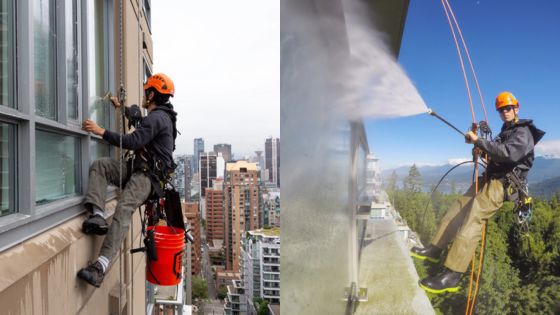
Fire-damaged properties refer to homes or buildings partially or fully impacted by fire incidents. As unfortunate as these events are, the damage they cause can open up investment opportunities for strategic California real estate investors looking to buy fire damaged houses. These properties often sell for below-market prices, providing a unique opportunity for investors to purchase them at attractive valuations. After rehabilitating the property by restoring or replacing fire-damaged areas, investors who buy fire damaged houses can sell or rent out the home for a profit, capitalizing on their investment and contributing to the revitalization of affected communities.
Whats a Fire-Damaged Properties
Properties can suffer varying degrees of damage from fires based on factors like the size and severity of the blaze. Minor smoke and heat damage may only require surface-level repairs, while major structural and system damage can necessitate significant remodeling. The extent of repairs needed and overall restoration costs are essential in the investment potential and valuation of fire-damaged homes.
Why Are Distressed Properties Appealing To California Investors
Beyond the lower purchase prices, investing in fire-damaged real estate can score investors’ properties in desirable locations that would otherwise be unavailable. There is also an immense satisfaction that comes with transforming a property from tragic to livable. Salvaging fire-damaged properties sustains neighborhood home values and prevents decay.
Assessing the Market and Opportunities
Real Estate Market Trends for Fire-Damaged Properties
The market for fire-damaged properties exists separately from traditional real estate. These properties do not appraise based on comparable sales but trade at a discount relative to their pre-incident value. This creates a buy-low opportunity for investment. Trends in the overall housing market still apply when evaluating future resale potential.
Investment Opportunities in the Fire-Damaged Property Market
Attractive investment opportunities in fire-damaged properties include foreclosed and auctioned homes, cash-only deals, and off-market transactions. Working with an experienced agent to access exclusive listings and notify investors of new inventory coming to the market is critical to finding deals in this niche space.
Getting Started in Fire-Damaged Property Investment
How to Invest in Fire-Damaged Properties
Before jumping into fire-damaged property investments, those new to the segment should thoroughly educate themselves on market conditions, valuation methodologies, rehabilitation requirements, and regulatory issues. Connecting with contractors experienced in fire restoration work is also pivotal when getting started.
Finding Fire-Damaged Properties for Sale
Properties impacted by fire damage come to market in a variety of ways. Investors may find listings traditionally sold through real estate agents, auctioned off by banks and municipalities, or hawked by wholesalers as off-market deals. Establishing relationships with key players is vital for sourcing inventory.
Evaluating and Managing Risks
Risks of Investing in Fire-Damaged Real Estate
While the potential upside of investing in fire-damaged properties is substantial, there are also numerous risks investors need to manage. Purchase, repair, holding, and disposition costs can all exceed expectations and seriously erode returns. Strict due diligence is required around structural soundness, environmental hazards, permitting issues, HOA restrictions, and insurance claim statuses.
Fire Damage Assessment for Real Estate Investment
Before purchase, investors should conduct thorough visual inspections and obtain contractor estimates on rehabilitation costs to quantify the scope of damage and required financial commitment. Ordering environmental testing around air quality and potential contaminants is also prudent.
Risk Management in Real Estate Investing
Proactively managing risks when investing in fire-damaged real estate comes down to budgets, checklists, contracts, and contingencies. Identify worst-case scenarios, quantify those costs upfront, and protect your investment through maximum flexibility in any property transaction.
Financial Aspects of Investing in Fire-Damaged Properties
Financing Options for Rehabilitating Fire-Damaged Properties
Funding the purchase and repairs of a fire-damaged property investment demands creativity around financing. Hard money, private money, cash-out refinancing, and tapping home equity lines are all potential options for securing capital. Investors who can pay cash wield the most power in negotiations.
Insurance Claims for Fire-Damaged Properties
Reviewing the status and details of any insurance claim on the property is imperative before acquiring a fire-damaged asset. Outstanding claims impact purchase terms and price negotiations. Understanding claims payout coordination and timing is critical, as is quantifying any restoration work not covered.
Renovation Costs and Real Estate Investment Returns
Accurately projecting renovation costs versus expected valuations after repairs guides investment return modeling. Investors must build sizable profit margins into their estimates to account for unforeseen expenses that routinely transpire on rehabilitation projects.
The Process of Rehabilitation and Flipping
Strategies for Flipping Fire-Damaged Homes
The most common strategy for trying to profit from investing in fire-damaged properties involves an immediate resale after completing renovations. Market conditions dictate whether a quick flip back on the market or holding the asset to rent makes the most sense financially.
Property Rehabilitation and Fire Damage Restoration Services
Working alongside experienced contractors specializing in fire damage repair – from structure reinforcement and roofing to plumbing and HVAC – gives investors the best chance of an efficient, comprehensive property restoration. Vetting qualifications are a must.
Legal and Environmental Considerations
Legal Considerations When Buying Fire-Damaged Properties
The due diligence process when evaluating fire-damaged properties must carefully confirm any liens attached to the asset have been fully remedied, that no pending legal action exists around responsibility for the fire and that the title is clear. Foreclosure sales can have lingering encumbrances investors must negotiate before purchase.
Environmental Impact of Rehabilitating Fire-Damaged Homes
Smoke, soot, and firefighting chemicals pose environmental risks when rehabilitating fire-impacted homes. Professionals equipped to conduct asbestos, lead, and mold testing help identify exposure dangers. Remediation can improve air quality for future inhabitants.
Valuation and Sale of Rehabilitated Properties
Property Valuation and Real Estate Recovery
Unique valuation methodologies such as cost, income, contractor estimate, and appraisal reconciliation assist with underwriting fire-damaged investments for purchase and charting recovery potential after renovation. Comparable sales often do not exist.
Selling Rehabilitated Fire-Damaged Homes
Thoroughly testing repaired systems, obtaining contractor sign-off on completed restoration work, and gauging market absorption rates all play into sellers’ ability to quickly yet profitably exit a rehabilitated fire-damaged property investment.
Case Studies and Success Stories
Case Studies on Fire-Damaged Property Investments
One Bay Area flipper acquired a fire-damaged single-family home that sustained significant structural damage for $430,000 – a nearly 50% discount off its pre-incident estimated value. After investing $120,000 into repairs, they sold the restored asset for $899,000 five months later.
Real Estate Recovery: Before and After
A California investor purchased a 1980s-built, 1600-square-foot single-story residence that suffered roof and second-story damage from an electrical fire for $105,000. Following an $83,000 entire interior and exterior remodel, the home sold for $270,000 – highlighting the profit potential available in this niche.
Navigating the Market with Expertise
Working with a Real Estate Agent Specializing in Fire-Damaged Properties
Realtors regularly transacting around distressed assets offer critical insights on pricing, vetting contractor teams, quantifying repair costs, interpreting insurance payouts, and evaluating prospective deals. Leaning on this experience protects against missteps when getting started.
Fire-Damaged Property Listings and Auction Guide
Many larger brokerages have dedicated teams specializing in fire-damaged listings sourced from the MLS, lender and government-owned inventories, and judicial sales. Investors can request email notifications to capitalize quickly on new distressed inventory coming to market in target neighborhoods.
Conclusion: Building Resilience through Fire-Damaged Property Investment
Investing in Fire-Damaged Properties vs. Traditional Real Estate
While every real estate asset brings some risk, investing in fire-impacted properties is a niche strategy that provides unique rewards and challenges. The elevated risk-reward profile fits some investor objectives and portfolio allocation strategies better than typical housing stock.
The Future of the Fire-Damaged Property Market
As extreme weather events and natural disasters increase in regularity, the supply of discounted, fixer-upper opportunities stemming from fire incidents stands to rise accordingly. While unfortunate, this reality only bolsters the investment case for proactive capital allocators willing to take on the added risk.
- 0shares
- Facebook0
- Pinterest0
- Twitter0



